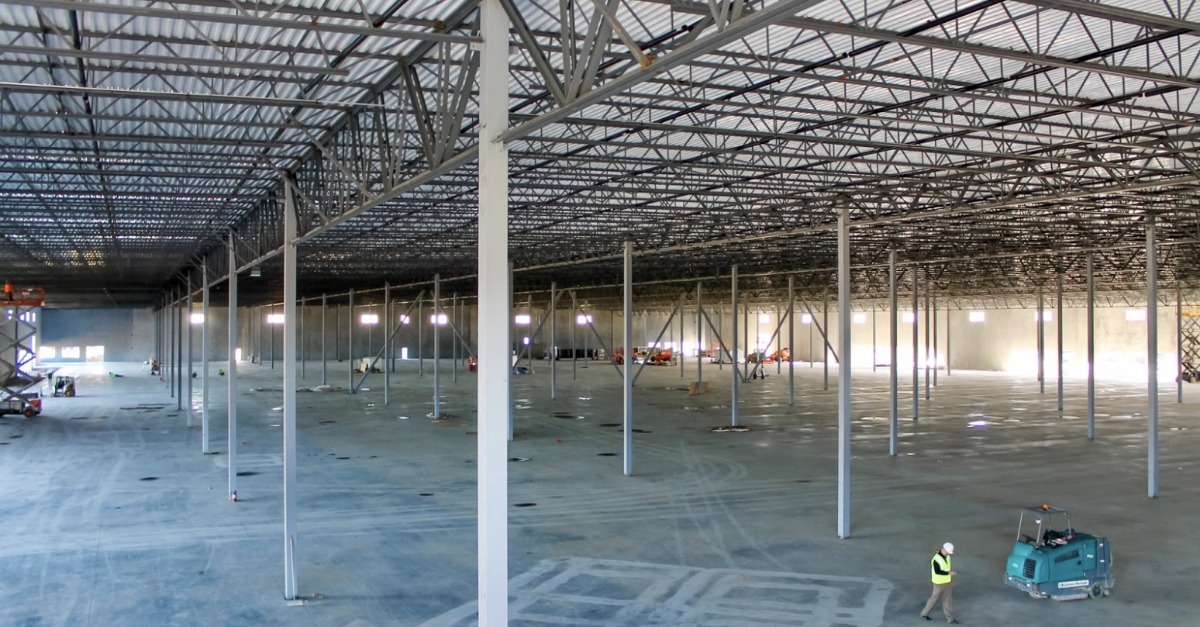Greater Kansas City has arrived on the national stage as a key link in the supply chain supporting an e-commerce industry under extraordinary new pressures. People are shopping online like never before and the Coronavirus pandemic has pushed the trend to new heights as manufacturers, warehouses and distribution centers scramble to meet soaring demand. A construction boom is emerging as the backbone of that scramble, and builders are laying out floors as big as football fields to pave the way.
“The floors inside these buildings are much more important than you might think,” explains AOG Business Director Blake Bennett. “They play a critical role in keeping operations running smoothly and that’s why our expertise is so valuable.”
Floor Flatness is the name of the game inside the buildings rising on Kansas City’s e-commerce landscape. It’s both a science and an art best left to those with advanced knowledge and experience in forming the foundation of massive, modern facilities.
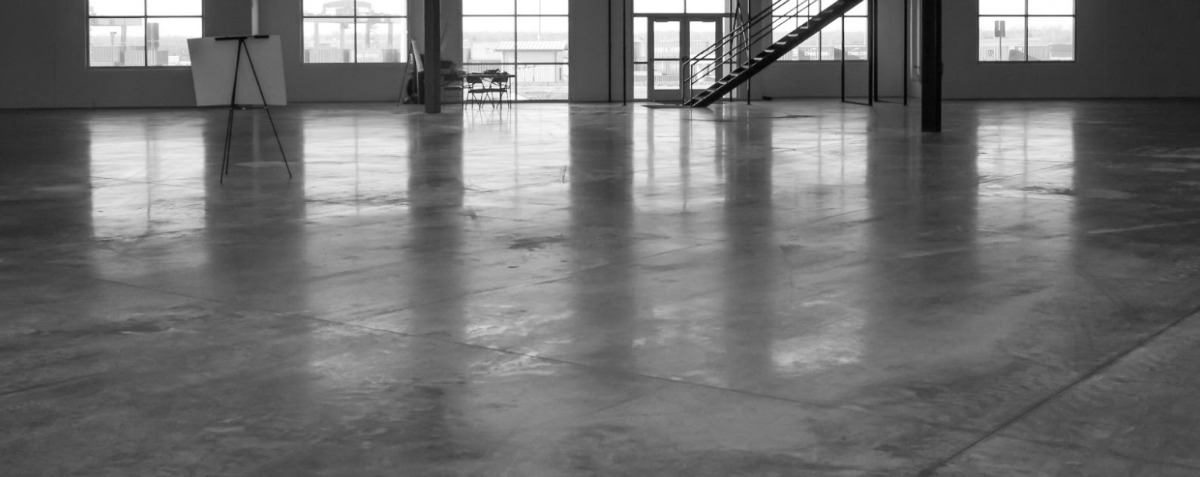
The Ground Level of Success
Operations supporting the e-commerce bonanza are going on inside buildings stretched over thousands and thousands of square feet of smooth, flat concrete. As the tidal wave of demand pours in, every square inch becomes precious. A constant flow of inventory stacks up and spreads out, making optimization of space a high priority.
“Some of these structures have ceilings as high as 40 feet or more,” says Bennett. “And they’ll use all but a few feet to squeeze in as much product and materials as possible.”
A flat floor is essential for maximizing space, allowing for the precise design and safe construction of shelving that towers without tilting. While most buildings, houses and other structures obviously have ‘flat floors,’ the flatness required in industrial settings is in a class all its own. Bennett says there are even varying degrees of what flat can be.
“There are flatness ratings, and many industrial structures require very high ratings allowing no room for fluctuations. You’ve got to get it exactly right because even the slightest tilt can throw off a shelving system. The floor is either going to support the shelving properly or create an imbalance that threatens the whole set up.”
In addition to helping maximize space, Floor Flatness also literally paves the way for automated picking devices, forklifts, and other mobile machinery that roll through industrial operations to knock out routine tasks. Pallets are picked up, sorted and stacked while the shelves themselves are often manipulated by machines as inventory is selected, packaged, and shipped.

Flat floors keep machines and vehicles moving without interruption inside warehouse environments.
High degrees of flatness ensure all those wheels keep rolling along smoothly without having to compensate for uphill or downhill imperfections that can mean expensive wear-and-tear and greater risk of malfunctions. Bennett says extreme flatness is also common inside manufacturing facilities where high-tech machinery performs powerful precision work that a floor must be able to withstand.
“When you’ve got high-tech industrial tools pounding out heavy-duty machine components day in and day out, the floor must hold up. It’s got to be able to handle the pressure without throwing off the precision these tools require. It’s a tall order and we’ve spent years perfecting it for businesses around Kansas City. Higher flatness ratings are extremely difficult to create in any industrial setting but can certainly be achieved when you have the kind of experience our firm has.”
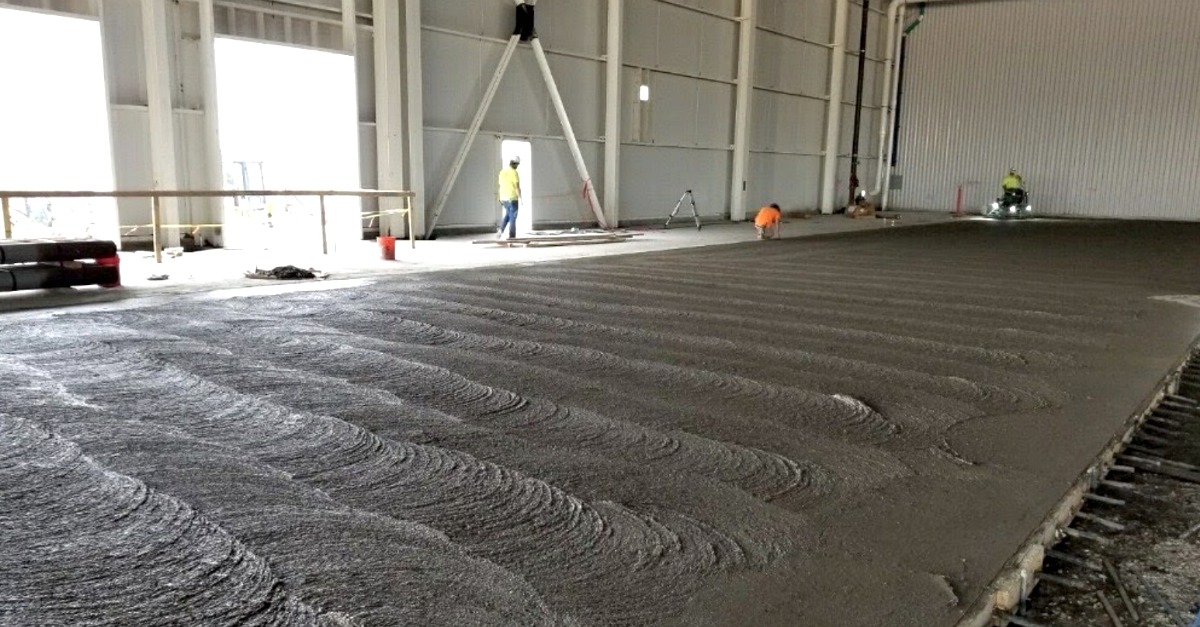
AOG has a long history of ensuring Floor Flatness for industrial purposes, like this floor constructed in preparation for high-pressure stamping operations at Ford’s Claycomo plant.
The Uphill Battle Toward Flatness
Shaping a flat floor begins long before concrete is poured. First, Alpha-Omega Geotech engineers must account for a variety of factors that will roll up into the final, flat finish. Our team considers everything from weight and pressure expectations based on the purpose of the facility to the make-up of the soil at the site.
“You know the art of it is bringing everything together into a single plan; the geotech, the testing, the materials, and the strategy,” says Bennett. “You’ve got to understand what’s in the ground and what the ground will be expected to support, all the way through to ensuring the right concrete mixture.”
AOG evaluates the subgrade before any construction begins, and in Kansas City that usually involves farmland. While local fields may seem naturally flat, it’s not that simple. Fields can be uneven, requiring crews to move huge amounts of soil around to lower higher ground and raise lower ground. Bennett says AOG must also plan around the presence of rock, a major factor in many construction projects.
“Rock can turn up in a variety of states from soft and brittle to hard and heavy. You have to figure out what you can do with what’s there. Can you move it around and make use of it or do you need to blast it, dig it out and bring in something better? We really try to make use of what’s there to keep costs down. We’re much more resourceful and creative than other geotech firms.”
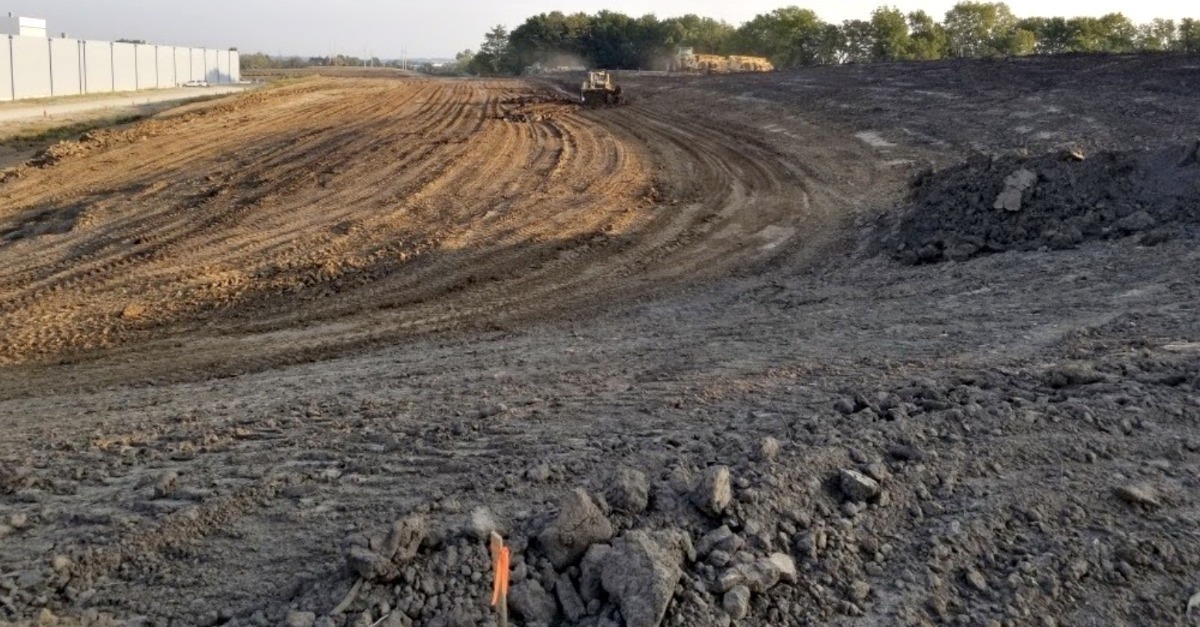
AOG’s subgrade investigation triggered a significant earth movement effort at the huge Meritex Lenexa Executive Park development.
Perfecting the subgrade is incredibly important under a floor expected to be flat and stay that way for the long haul. Bennett says foundation settling over time is a reality but manageable, and the way our team can forecast and plan for it speaks volumes.
“It’s virtually impossible to avoid settling, even when you’ve secured a structure to rock. Soils expand and contract, moisture changes and so does the temperature. The question is how much settling can your particular floor tolerate? E-commerce facilities don’t allow for much flexibility and that’s one area where we can really make a difference. We can shape the subgrade and develop foundation solutions that make flat floors last.”

AOG has a long history of shaping subgrades and surfaces to last, including athletic field projects involving extremely rigid artificial turf flatness specifications.
The scale of e-commerce warehouses and distribution centers makes Floor Flatness even more important and intensifies the challenge. A little variation at floor level may not seem like a problem but it balloons into a serious risk with elevation. “You may not notice a degree off from the floor to about four or five feet,” explains Bennett. “But go up 35 feet and all of a sudden you’re leaning over enough to topple shelving structures.”
And think about machinery rising toward the ceiling to retrieve inventory. Forklifts are not delicate or all that precise, but when they’re engaging pallets 30-feet up, the forks need to slide directly into position. Bennett says otherwise, a tricky maneuver can quickly become dangerous.
“You’ve got something on that top shelf that you need or you’re trying to put something up there. The forks must be level at all times. You can’t have any tilting or the balance is thrown off and you’re talking about heavy things falling long distances. The risk of damage or injury is real.”
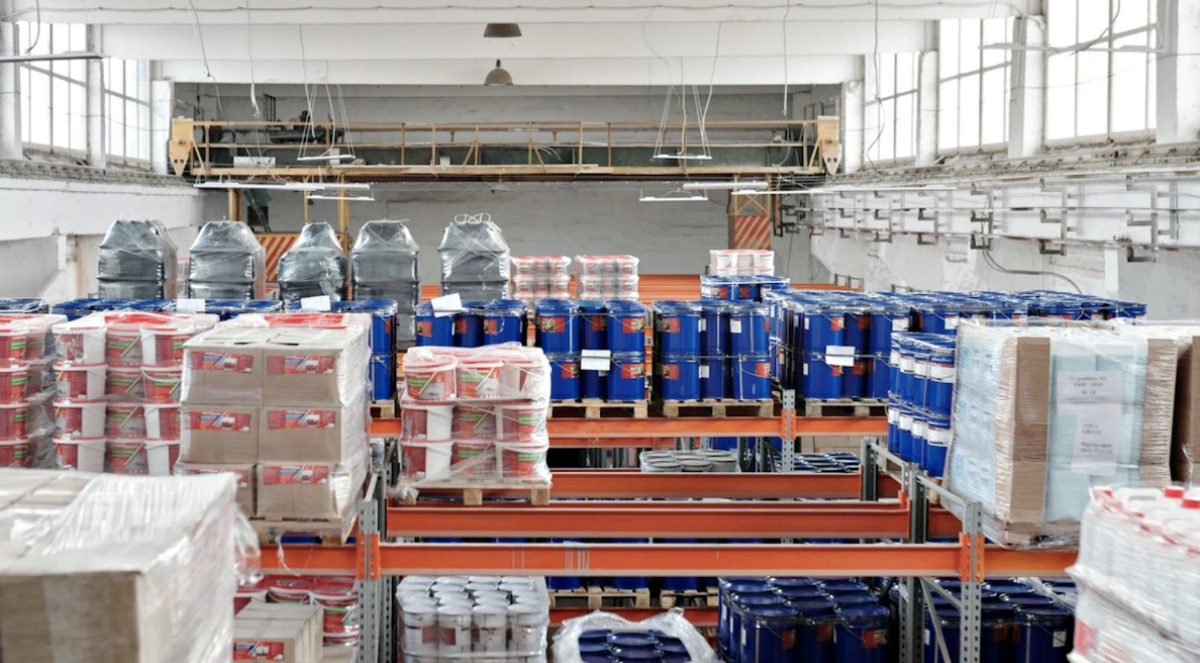
Inventory can stack up at dizzying heights near the ceiling of large-scale warehouses.
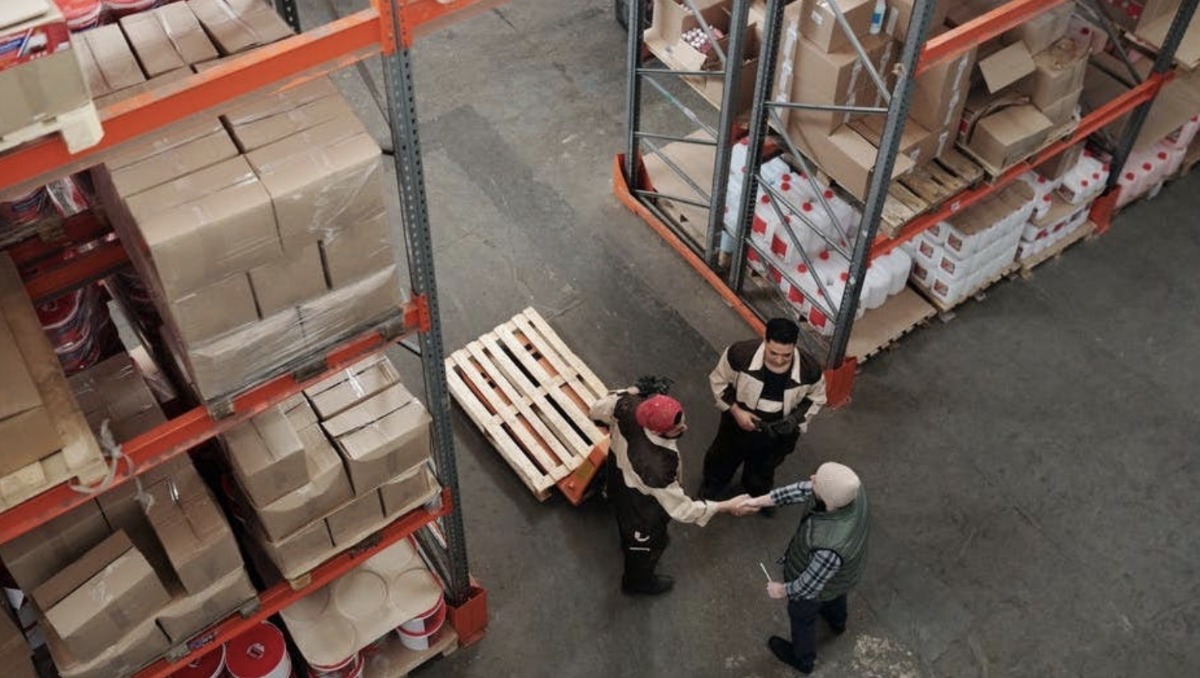
A view from above carefully positioned warehouse shelving structures.
Add it all up and it’s easy to see why Floor Flatness is quite literally a critical part of a smooth-running industrial operation. The safety of workers and the proper function of equipment depend on it. And the full optimization of operational space isn’t likely without it.
The goal of our work at AOG is to get buildings up and out of the ground in the safest and smartest way possible. Kansas City is rediscovering the value of what we do as the e-commerce boom turns our community into a symbol of the logistics revolution. We’re proud to be foundational in success across industries and we look forward to helping the e-commerce boom build its way into prominence.


